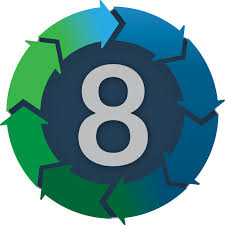Forecasting techniques are, in effect, ways for your organization to make predictions. The range of available techniques run the gamut from creative art forms to strict numbers based science. Of course, one is not better than the other, but can complement each other well enough.
That said, forecasting techniques like scenario writing are a way to prepare your company, specifically your sales department, for different possibilities in your future.
Companies today use a range of techniques to forecast sales, one of the often under appreciated techniques is scenario writing.
With this process, a qualitative approach, you can achieve long term planning and prepare for any potential extremes that your quantitative data might not be able to provide. Similar to forecast stages, this approach is contingent upon a more subjective appreciation of sales and business.
With this method, your goal is to project numerous likely outcomes based on different, highly specific, assumption sets. So, you would draft several pictures of what might unfold based on those individual sets.
This provides you with the best case scenarios, worst case scenarios, and everything in between.
Advantages and Disadvantages of Scenario Writing

In order for scenario writing to be an effective forecasting technique, you need to plan the scenarios in question around uncertainties that lie ahead for your organization. Then, you need a clear plan of action that you would be able to immediately implement should any of the projected scenarios happen.
Even when properly implemented, there are disadvantages to using this forecasting technique.
Advantages:
You have the opportunity to think strategically about the things that might happen within your sales department. Tangentially, you get to make plans that comprise a contingency of sorts, preparing your sales for the worst and best to come.
Disadvantages:
As is the case with forecast stages, using scenario writing means you need to have one person within your company who has a keen eye for psychology and for business activity, particularly within sales. These are more subjective than they are quantitative. That means they function as more of an art form and less of a strict science. This should be used as a way to complement other data driven methods, rather than relying upon it entirely.
By combining more than one technique, you get the best of both worlds and generate a fuller picture of what the future brings.
The Eight Step Scenario Planning Process

With this technique there are eight steps you can follow in order to think strategically about your scenarios and your planning process:
- The focal issue within your assumption set.
- Key factors that are influenced by the focal issue and which influence the focal issue.
- Any external forces from the focal issue.
- Critical uncertainties related to the external forces or critical uncertainties.
- Scenario logics, as they derive from: a) key factors b) external forces or c) critical uncertainties.
- Scenarios
- Implications and options
- Early indicators, as they relate to the focal issue and the key factors
With this, you will note that a lot of the aspects relate to one another in some way. That is to say, that scenario writing looks similar to storytelling.
Let’s look at an example:
If your focal issue is annual sales, your key internal factors might be sales calls or received inquiries. The external factors that might impact this include local restrictions or competitors.
Your critical uncertainties pertain to what issues you might face over the coming year. This could include customers preferring online content rather than in-person lectures, changes to local institutions that impact your business.
From there, you can develop scenarios that pertain to each of these potential situations, in both good and bad directions. With that, you can develop the scenarios, what implications it would have for the annual sales, what options your organization would have if that event were to take place, and any early indicators.
This, in effect, would help you understand how your organization would go about handling each of these scenarios.
So, this is a process that can be applied to annual sales, quarterly issues, and other long term projections. With it, your organization won’t be caught off guard when things fluctuate favorably or unfavorably for your organization.
Using the example above, if you provide in-person content now but you have projected customers will lean toward newer technology, you could choose to implement an online version.
However, you would still need to be prepared to handle that in terms of sales calls and scheduling, something you would prepare for with scenario writing. By comparison, had you not prepared for the possibility of increased sales for an online component, you would find yourself ill equipped to handle the future scenarios, no matter how beneficial they would be for your company in terms of meeting annual sales requirements for your sales staff.
Should You Use Scenario Writing as a Forecasting Technique?

The answer to this question depends on your company. You are not limited to using just one technique. When your organization relies upon multiple forecasts it allows you to achieve a fuller picture of your overall sales approach. Thus, it is imperative that you decide which method is most effective for your company before you arbitrarily start applying techniques.
Conversely, don’t let yourself get caught up in the analytical stage of trying to find out which one is best, at the expense of just implementing one. While it is crucial to have accurate data, you should aim for valuable information above perfect information.
Remember too that all techniques take time and practice to successfully implement. So you might need to tweak the methods you use in conjunction with the manner you go about using scenario forecasting in order to achieve your sales objectives by looking into the future.
________
Questions or comments? Contact SPOTIO at [email protected] or comment below.
SPOTIO is the #1 field sales acceleration platform to increase your revenue, maximize your profitability, and increase your team’s productivity.
Want to see a product demonstration? Click here to see how SPOTIO can take your sales game to the next level.



